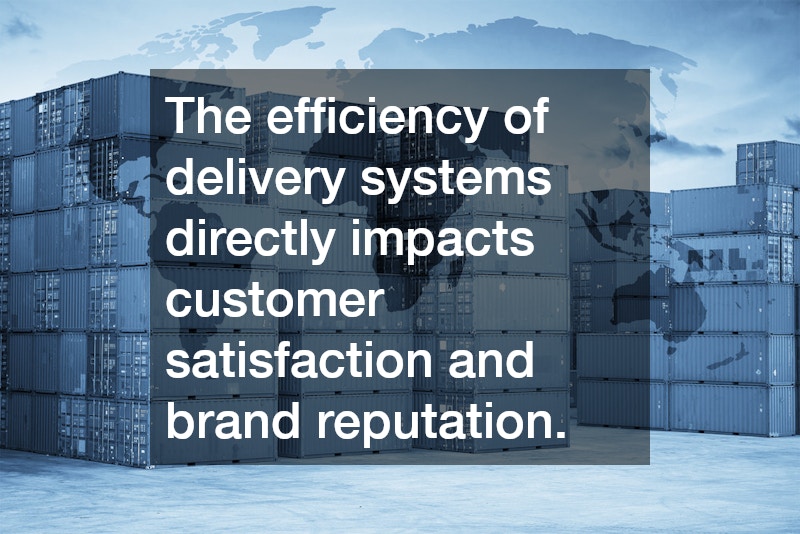The intricate task of balancing security and efficiency in high value delivery services is crucial to safeguarding valuable assets. Service providers face several challenges, from potential theft to maintaining the integrity of goods while ensuring timely delivery. Advanced technologies and strategic approaches have become indispensable tools in addressing these complexities, paving the way for a more secure and efficient delivery paradigm.
In today’s fast-paced world, the demand for high value delivery services has soared, necessitating innovative solutions to keep up with industry expectations. Factors such as globalization and e-commerce proliferation have further accentuated the need for reliable and secure delivery mechanisms. As such, incorporating technologies like IoT, AI, and blockchain has proven essential for optimizing operations while mitigating risks.
Moreover, the efficiency of delivery systems directly impacts customer satisfaction and brand reputation. As companies navigate the shifting landscape of high value deliveries, achieving a synergy between security initiatives and operational efficiency remains a top priority. This article delves into some of the best practices, methodologies, and technologies currently driving advancements in this critical sector.
What are the best practices for ensuring security in high value deliveries?
Risk Assessment and Management
Conducting a comprehensive risk assessment is the cornerstone of safeguarding high value shipments against potential threats. By systematically identifying vulnerabilities, companies can develop robust strategies tailored to address specific security needs. Implementing risk management frameworks enables continuous monitoring and quick response to any adverse events.
Risk management practices involve proactive measures such as thorough background checks for personnel, secure packaging, and controlled access to sensitive areas. These practices effectively decrease the possibility of internal and external threats compromising shipments. Periodic audits and assessments are instrumental in updating risk management protocols and ensuring their relevance.
Furthermore, adopting a company-wide culture of risk awareness helps in fostering vigilance and accountability among employees. This approach involves equipping staff with the necessary tools and knowledge to understand and respond to various security challenges effectively. Ultimately, a well-executed risk management strategy is essential in fortifying a company’s defenses against potential threats.
Advanced Tracking Technologies
Advanced tracking systems are revolutionizing the security landscape by providing real-time visibility and control over shipments. GPS-enabled devices and RFID tags are becoming integral components in monitoring the location and status of valuable goods. These technologies allow stakeholders to make informed decisions based on real-time data, ensuring prompt interventions when issues arise.
Integration of satellite and cellular networks enhances the communication capabilities of tracking devices, facilitating seamless data transmission. This interconnectedness ensures that even in remote or challenging environments, tracking systems remain operational and reliable. Consequently, companies can maintain consistent oversight, thereby reducing the risk of loss or theft.
Overall, advanced tracking technologies not only contribute to improved security measures but also streamline logistical operations. They enable optimized route planning, reducing travel time and operational costs. By leveraging cutting-edge tracking solutions, companies can achieve a harmonious balance between security and efficiency in their delivery services.
Employee Training and Protocols
Human resource plays a pivotal role in securing high value deliveries, making employee training an indispensable aspect of security protocols. Training programs should focus on raising awareness about potential threats and equipping staff with the skills to handle them proficiently. Employees are often the first line of defense, and their diligence can make a significant difference in preventing security breaches.
Standardized protocols, when combined with training, ensure that employees consistently follow best practices and regulations. These standardized procedures act as a benchmark for actions during various stages of the delivery process, thereby reducing the likelihood of critical errors. Additionally, periodic refresher sessions help inculcate a culture of continuous learning and adaptation to emerging threats.
Moreover, instilling a sense of responsibility among employees encourages accountability and motivation in maintaining security standards. Recognition of their efforts can further enhance engagement, leading to a dedicated workforce committed to upholding the company’s security framework. As a result, effective employee training and well-defined protocols are cornerstones of successful high-value delivery services.
From risk management to cutting-edge tracking systems, each component plays a crucial role in building a resilient delivery ecosystem. The synergy of human resources, technological advancements, and collaborative efforts is key to tackling the multifaceted challenges inherent in high value deliveries. As the industry continues to navigate this dynamic landscape, remaining agile and future-ready is paramount to achieving long-term success.
Ultimately, the pursuit of excellence in high-value delivery services lies not only in addressing current challenges but also in staying one step ahead of future trends. By embracing continuous improvement and innovation, businesses can position themselves as leaders in this ever-evolving field, delivering unwavering value and security to their clientele. As we look towards the future, the collaboration of people, processes, and technology will undoubtedly shape the next era of high-value delivery services.

